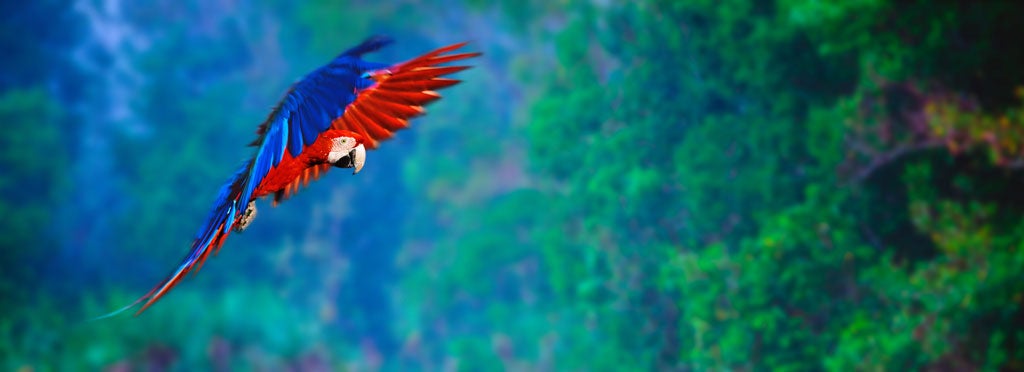The Great Animal Orchestra, By Bernie Krause
This musician-turned-naturalist finds via his fieldwork that calls and cries can be matter of wild life and death.

Bernie Krause started his journeys into sound as a guitarist, only to be told by music schools that the guitar was not a musical instrument. That was in the 1950s; in 1963 he joined The Weavers, and played alongside Pete Seeger the night the folk group imported "Guantanamera" from Cuba to the United States. Then, in the mid-1960s, he got into electronics and the newly-developed Moog synthesiser.
Together with his collaborator Paul Beaver he produced a series of albums, including the 1967 Nonesuch Guide to Electronic Music, whose accompanying booklet about sine waves and cycles reads like an engineering lecture delivered in a windowless room.
Beaver died suddenly in 1975. Krause had tired of the music industry, having "been fired and rehired more than half a dozen times during the making of Apocalypse Now alone". He opened himself up to nature. "You might think I left the world of music behind for that of natural sound," he reflects. "Instead, that is where I truly found it."
He found it through technology, though, communing with nature via headphones. This allows him to hear all the sounds together, instead of picking out individual sonic figures from the acoustic background. Perhaps artificial mediation makes it easier to get away from what is, after all, a perfectly natural way to organise incoming signals into patterns.
It also helped that he was still in touch with his studio roots. At first he followed standard practice, seeking out individual species the way birdwatchers tick off their lists, but grew bored with that pursuit. Thinking like a music producer, he set up a pair of stereo microphones and took in the sounds as a whole.
As he explored soundscapes around the world, he became a sonic ecologist. Recordings revealed that human disturbance could leave an environment acoustically degraded even though the place might look as though it had recovered – ironically, the evidence emerges when sounds are represented in visual form, as sonograms. Disturbance disorganises soundscapes, their patterns breaking down.
Krause was struck by how the space is filled in a healthy acoustic environment. It seemed that animals made acoustic niches, seeking out unoccupied parts of the sound-space to maximise their chances of being heard; the more species there are, the fuller and more extensively partitioned the space will be. Biophony, as Krause calls the sounds made by animals other than humans, will sound orchestral. The comparison is an illusion rather than an analogy. Musicians in an orchestra work together for a common purpose. Animals signal mainly to their kind. A biophonic orchestra is one in which flautists play to flautists and cellists to other cellists.
This can work to their advantage if they all sound alike to predators' ears. Spadefoot toads synchronise their quacking calls into a chorus – an acoustic smokescreen from which predators have difficulty picking out individual targets. Their lives may depend on achieving harmony. One of Krause's sonograms shows how the chorus at Mono Lake in California was blotted out by a military jet flying low nearby. The spadefoots took about three-quarters of an hour to align their voices again. During that period Krause watched a pair of coyotes and a great horned owl move in to pick off acoustically exposed toads.
Krause believes that disrupting soundscapes is bad for humans as well as for animals. He writes, eloquently of what we lose by making noise and what we can gain by hearing music in nature. If you love landscape and are dismayed by the image of a jet tearing the air above it, his thoughtful protests will resonate with you. But there are many people for whom, as bumper stickers proclaim, jet noise is "the sound of freedom". It all depends on what sounds mean to you. The bass drone of a frog chorus in a garden pond can sound remarkably like motors idling in a jam; the difference in how the two are perceived arises from knowing one is animal, the other mineral.
The Great Animal Orchestra is a wonderful advertisement for the effects of natural sound upon its author. Krause writes like the field naturalist he is, attentively and with a light tread. Moving between music, memoir, science and a humanistic spirituality, he can be forgiven for not acknowledging the dog-whistle in the title metaphor to those for whom an Orchestra implies a Conductor. The optimism of his spirit is infectious: this is one of those books you are grateful to have read, rather than relieved to have finished.
Marek Kohn's 'Turned Out Nice' is published by Faber & Faber
Join our commenting forum
Join thought-provoking conversations, follow other Independent readers and see their replies
Comments
Bookmark popover
Removed from bookmarks